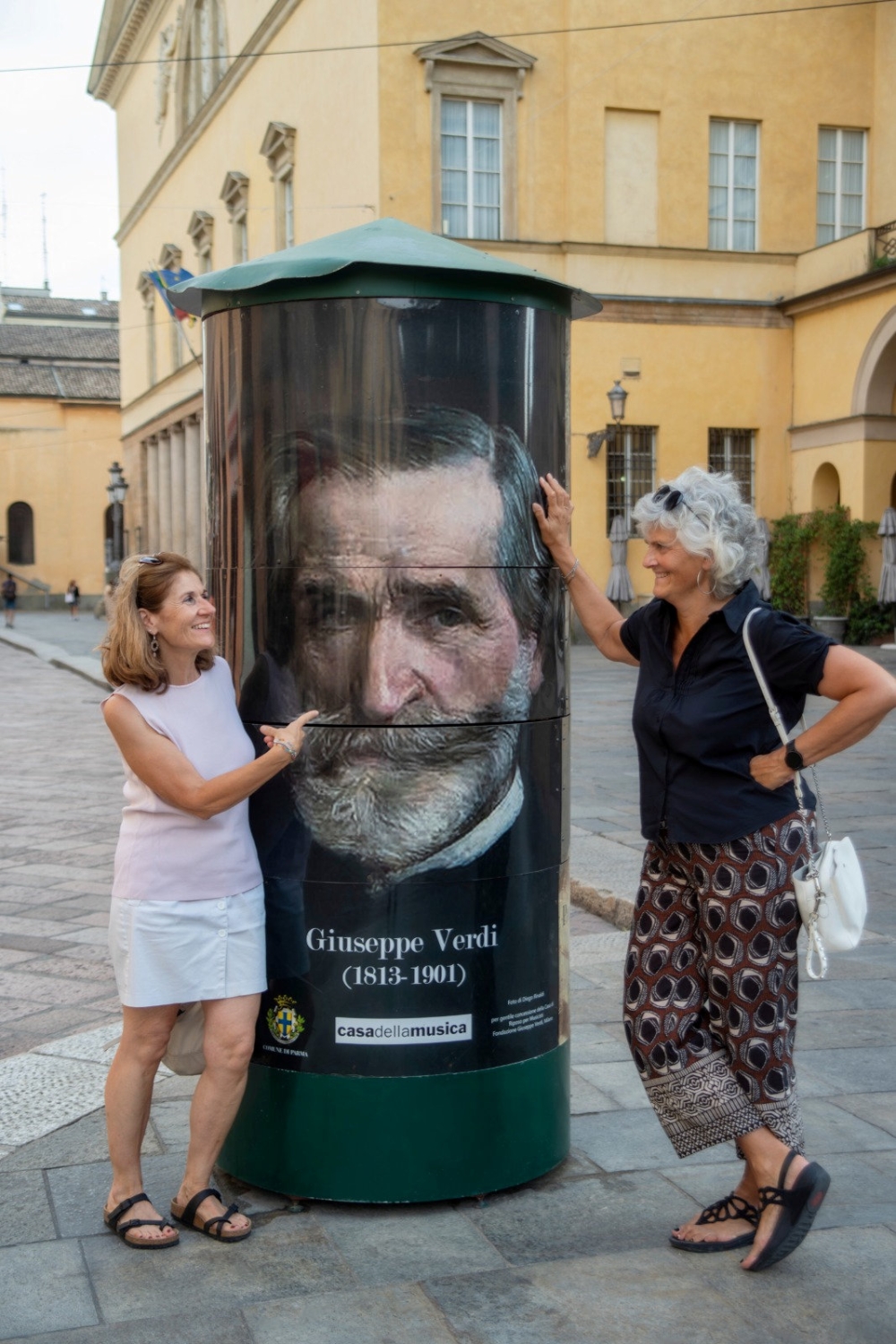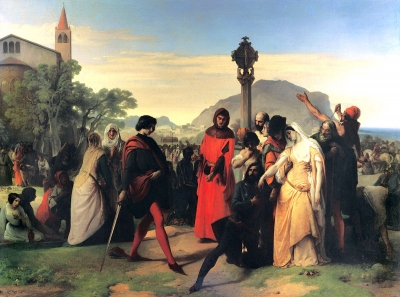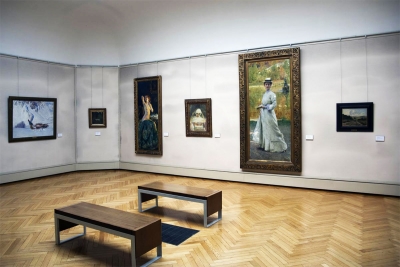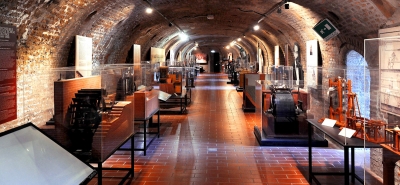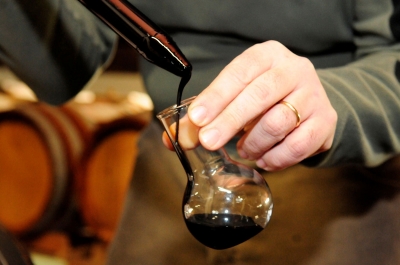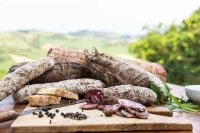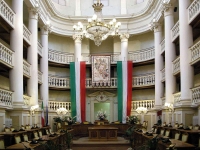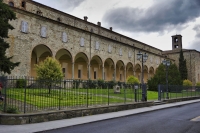Verdi is back!
After the break due to the pandemic, the Festival dedicated to the Maestro returns into the theatres, the streets and the houses of Parma.
Particularly beautiful and intense is the contribution of the students of the local Conservatory Arrigo Boito. By interpreting some arias and duets during the Cuckoo Verdiano (Teatro Regio 1 p.m every day) and thanks to single events located in the territory, they offer for free their Verdi’s repertoire to citizens and tourists.
The Teatro Regio rich list of operas goes from La Forza del Destino to the Requiem Mass, from Simon Boccanegra to the Four Sacred Pieces. A musical offer complemented by a special day: October 10, Verdi’s birthday.
Celebrations will begin in front of the monument dedicated to him, where the Chorus of the Regio of Parma and the Chorus Giuseppe Verdi will sing together the 'Và pensiero'.
Join our guided tours for music lovers. The perfect chance to know the city of Parma and its special relationship with music.
The most significant places, the most exclusive flavors combined in a summer Parmesan tour.
The tour starts in the morning from Piazza del Duomo, visiting the Cathedral of Santa Maria Assunta that welcomes you with its elegant coolness. Inside the huge space of the church, it will be possible to admire the “Deposition” by the famous medieval sculptor Antelami and the incredible dome frescoed by Antonio Allegri. The itinerary continues stepping out, walking in the shadow of the cathedral large apse, to visit the nearby Monastery of San Giovanni Evangelista and its church, first example of Renaissance religious building in the city
The next stop is in the beating heart of Parma: Piazza Garibaldi. Ancient Roman forum, it is now characterized by different buildings. Your guide will illustrate their particular history and structure while you, why not?, will taste a delicious ice cream!
Your walk continues towards the Basilica della Steccata, the Teatro Regio and the Pilotta Complex to finish among the most characteristic alleys of the city, sitting at the table of a shady dehors, ready for the guided tasting of our food excellence: Parmigiano-Reggiano; Parma ham; Culatello di Zibello and to toast with a fresh glass of Malvasia wine. So good!
A half day to discover and experience Parma, is it enough?
The exhibition “OPERA, the stage of the society” welcomes you with soft lights and the bright colours of the paintings housed in, first of all the Vespri Siciliani by Hayez.
Items displayed in the sober rooms of the Governor’s Palace (Palazzo del Governatore) inspire some consideration and numerous thematic paths.
The key word is in the title: OPERA.
A genre of entertainment strictly bound to the people, especially with the Italian one.
The exhibition touches different sides - social, political, musical, scenographic, cinematographic of a kind of art born inside theatres but that comes then out of them to represent the city of Parma in the world.
Visitors can see archive photos, models of scenic machinery, sheet music, billboards, ancient sketches and, as a touch of lightness, marvellous costumes. They were worn by the most famous singers whose divine voices have been the real stars of the Opera.
VISITS ON RESERVATION by writing to This email address is being protected from spambots. You need JavaScript enabled to view it.
The Ricci-Oddi modern art gallery recently rose to prominence after the discovery of the Portrait of a Lady by Gustav Klimt, stolen from the collection in 1997.
Opened to the public in 1931, it tells us a story of pure love and passion for contemporary art. It is housed in the building on purpose created by its founder, Giuseppe Ricci Oddi, as a "temple" dedicated to contemporary authors not or little known at the time.
Today visitors can enjoy an overview of Italian and European art from the Romantic period to the 1940s.
Among the artists: Fattori, Hayez, Signorini, Bocchi, Boldini, Boccioni, De Pisis, Sartorio, Segantini… and the recovered Klimt, one of the only 3 paintings by the Austrian artist on the Italian peninsula.
In the evocative rooms of the former Gallotti furnace, a very interesting museum has found a home. It takes us to the ancient Bologna, now disappeared, that survives in an industry that is still prosperous and innovative.
We are talking about the silk industry, which developed in the city between the fourteenth and seventeenth centuries thanks to the abundance of water (canals, underground rivers) and the Bolognese creativity.
In the dedicated section, as in a journey back in the past, you can admire a working silk mill replica powered by water wheels, essential to provide the energy needed for production. A true masterpiece of innovation and inventiveness.
On the ground floor, where the 16 brick ovens were located, models and machines from the oldest technical institute in the city are exhibited. A tangible demonstration of the different areas in which the Bolognese industry has been able to develop: starting from ice cream to get to sport cars.
The monk Donizone, Matilda from Tuscany’s biographer, recounts an episode: the German Emperor-to-be Henry III asked to taste the famous “balm” he had heard about. So the Bonifacio Lord of Canossa (Reggio Emilia) – Matilda’s father - sent a little silver barrel with the precious product to Henry during his stopover in Piacenza. And this happened in 1046!
Visiting today a vinegar house (Traditional Balsamic Vinegar) is a unique experience. And it is a privilege to be able to tell about the patience, the passion and the bond with the land that this product carries with it. It is the magic of waiting that is released after decades in flavours thick of memories: woods, fruit, grapes, time…
You cannot say you know about Italian food if you have never visited a vinegar house. Our guides will be able to lead you into this world with their narration and a guided tasting of this magic product in its different grades of maturation (at least 12, 20 and 25 years!!).
The Reggio Emilia territory is a chest filled with a precious food treasure: Parmigiano Reggiano cheese, Traditional Balsamic Vinegar in the front line followed by a large number of other products.
Visiting a cheese dairy or a vinegar house opens the door to a marvelous world made up of ancient traditions and of a unique know how handed down from a generation to another during centuries.
Our guides know all the steps that lead to the creation of these local treasures and will be happy to share them with you
Moreover, to fully enjoy the tastes and flavors of the Reggio area, you cannot miss a snack or a meal based on these other specialties: erbazzone (sort of herb pie), scarpazzone (the mountain variant in which rice is added), salami with gnocco (local baked or fried focaccia), tortelli stuffed with herbs, pumpkin or potatoes, sweet and sour little onions from Boretto and a glass of local Lambrusco.
Along the four valleys that connect the Apennines to the plain, the three PDOs that make the local gastronomy famous are produced: coppa, pancetta and salami.
This fact alone would be enough to justify a visit to these lands, but that is not all.
The Piacenza hills are in fact producers of excellent D.O.C. wines that have their ancient roots in local history, from the Etruscans to the Romans.
Among the whites, Ortrugo stands out, among the reds, Gutturnio, while the sweet Vin Santo is produced in Vigoleno.
Our gourmet tours are journeys into flavours that are the result of old local traditions and could be combined with dedicated historical and artistic visits.
The Tricolore or Italian Tricolour Flag first flapped on 7th January 1797.
Where? Right here, in the Tricolour Hall in Reggio Emilia.
For a city tired to be ruled by the Este Family, the young Napoleon and France represented shared ideals of Freedom, Equality and Fraternity.
Chased away the Este Duke, the local representatives gathered together with those of Modena, Bologna and Ferrara in a large hall where the flag of the Cispadan Republic was presented for the first time.
A kind of tribute to the French flag where blue gave way to green.
If you enter that place today, the so-called Sala del Tricolore (Tricolour Hall), you can still breathe the same atmosphere: full of energy, pride and passion for freedom
A land of wind, sandy shores and pilgrims’ paths.
If you want to understand this territory, you have to follow the river.
The Rivalta Castle, the Travo Archeological Park, the Hunchback Bridge and the Saint Colombanus Abbey in Bobbio, they are all along the Trebbia River.
A fundamental junction for the medieval pilgrims who set out along the Abbots’ Way, an alternative way to the ‘classic’ Francigena to get to Rome.
A river that keeps telling us ancient stories and that offers, with its still clear and bathing waters, a full contact with nature.
More...
If you want to travel through time, you have to walk along these corridors.
A path from the Roman vestiges to the splendours of the Dukedom: this is the Estense Gallery of Modena.
It is just the marble portrait bust of Francesco I by Gian Lorenzo Bernini that welcomes us.
The Duke looks far away while the wind lifts up his cloak.
Thanks to the talent of Bernini it appears to be made of soft fabric. We forget that it is carved!
The Gallery houses also paintings and collector’s items. The musical instruments are amazing.
The carving decoration applied to violin making has incredible effects, almost exaggerated.
Stunning the famous Estense harp, made in 1581 and played in honour of Margherita Gonzaga by a female ensemble.
Reggio Emilia or, in other words, three theatres in a tiny plot of land. Built in the area of the ancient citadel, they enable the staging of almost all types of theatre productions.
The best known is the Valli Theatre. A traditional Italian opera house where Luciano Pavarotti made his debut in 1961. The neoclassical style of the exterior and interior decorations make it the young cousin of Parma's Regio Theatre.
To its right the Ariosto Theatre, dedicated to prose. It shares with the third theatre, known as La Cavallerizza, an... equine background. The first could host equestrian performances while the second was used for training horses. Now it is a theatre with adaptable spaces, an ideal venue for special projects
Palazzo Farnese in Piacenza is the current seat of the Musei Civici (City Museums).
Theatre of the brutal murder of the Duke Pier Luigi Farnese, this historic building has become a huge box for masterpieces and precious objects like the Etruscan Liver, the very sweet Botticelli Tondo (rounded painting), the ducal frescoed apartments and much more.
Don’t miss the giant basement where you’ll discover the secret life of the court.
Right there you will find the Carriage Museum, second only to that of the Quirinale Palace in Rome. It takes us (this verb fits perfectly...) throughout the history of the European way of life from 18th century to the Modern Age.
An important recognition has brightened the summer of 2021 throughout the Emilia Romagna region.
UNESCO has confirmed the uniqueness of the arcades of Bologna, architectural structures that cross the city for 62 km, 40 of which in the old town centre, declaring them a World Heritage Site.
Born in the Middle Ages as building abuses in order to acquire living space, they are now meeting points, alternative pedestrian routes, protection from bad weather.
It is said, in fact, that a true bolognese is able to cross the city from one side to the other on a rainy day without getting wet!
They shelter from rain and snow but they also shelter from the sun!
They work as wonderful unusual routes for our guides during our winter visits in the beautiful city of Bologna.
